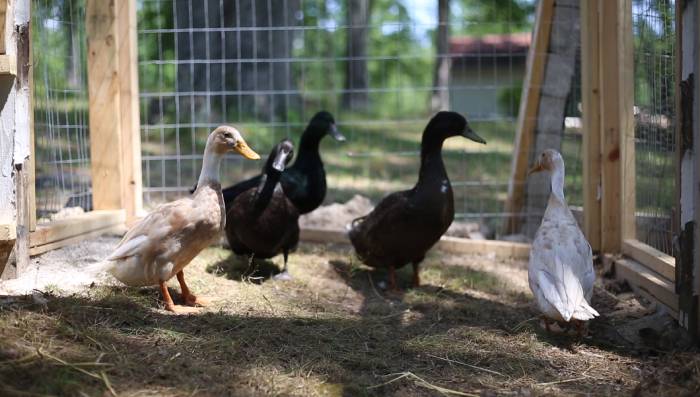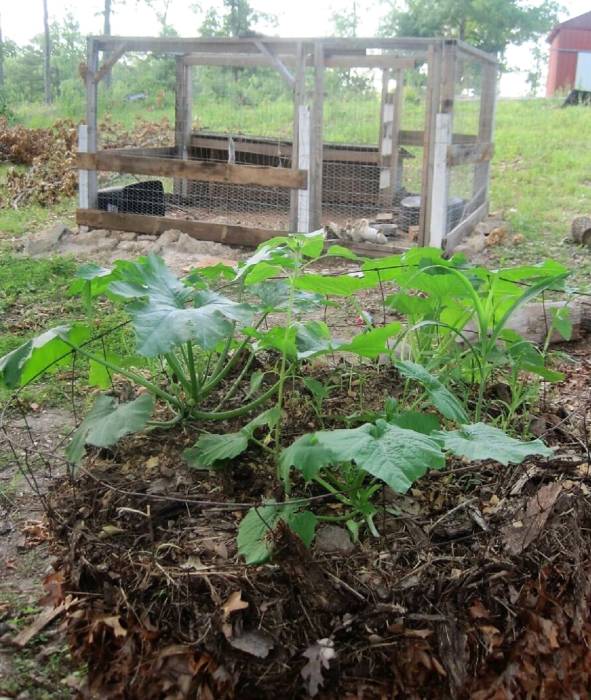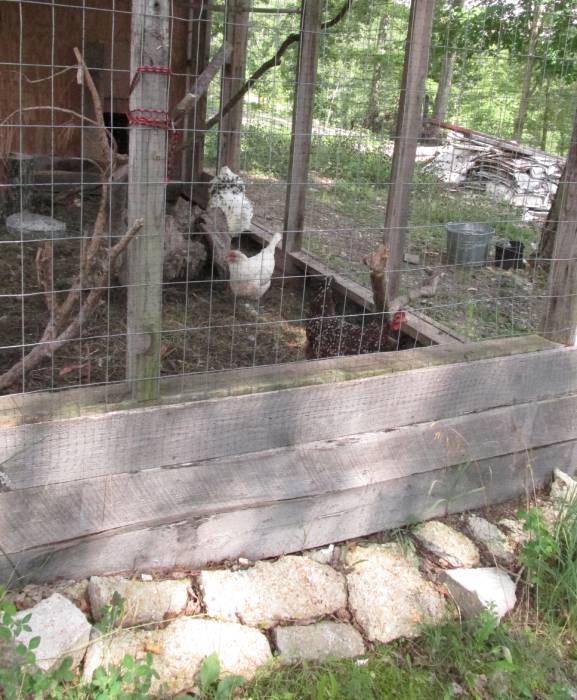
Reading Time: 5 minutes
by Wren Everett
When it comes to easy-care poultry, ducks have to be a contender for top billing (pun intended!). When the goats and chickens are sulking under a roof during a downpour, ducks are enjoying “their” weather with nary a care. When the cold wind blows and the pond is half-frozen, the ducks make it seem like a winter resort as they blithely swim through chilly water and sleep happily atop chunks of ice.
But for all their apparent disregard for all sorts of nasty weather, ducks still benefit from a dedicated shelter and will make good use of it when it’s provided. True to form, though, ducks don’t need anything fancy, so you can easily design and build a shelter yourself or even retrofit an existing structure. Whatever you decide, here are a few design elements to keep in mind to make it useful and safe for bird and human alike.
Make it the Right Size
The general consensus is that each duck needs, at the very least, 4 square feet of indoor space and 15 square feet of outdoor space (disregard that, of course, if your ducks free-range). Keep in mind that the more space any animal has, the happier and healthier it will generally be.
Additionally, make sure the door is wide enough that at least two ducks can enter or exit at the same time (something that happens often). Ducks seem to treat every coop entrance or exit like it’s Black Friday in the 90s, pushing and shoving and clambering over each other.
Make It Duck-Accessible

Ducks are truly graceful on the water, and they can cut a fine figure in the air, but when it comes to land navigation, they leave a lot of finesse to be desired. Since they’re not the best on their feet, you’ll have to make sure your coop doesn’t have any steep slopes for them to slip on. If you do have a ramp anywhere in the structure, give it as gentle an incline as possible, and provide ridges for their slippery, webbed feet to grip.
Make It People-Accessible
A duck-sized palace may look adorable on social media, but if it’s awkward to get a pitchfork in to muck it out or if it has too low a ceiling to allow a human to move comfortably, it’s going to be a royal pain to keep it in good condition. Keep the human element in mind when designing the shape of your coop, and make sure you can access the area just as easily as the ducks can. This might be designing a back door that allows you easy access to the duck area or making sure that it’s tall enough that you can walk inside without hunching.
Make It Near a Compost Pile
This is a personal preference, but I’d never have any waterfowl housing without an easily-accessible composting area nearby. Anyone who keeps ducks or geese swiftly becomes aware that they’re messy critters. They splash in their water, spread dampness and manure wherever they go, and have no problem turning any puddle they find (or create) into a muck-filled morass. As such, their houses can transform from clean to a mud-splattered, sour-smelling sty faster than you’d believe. Likewise, the amount of muck, manure, and soiled bedding a flock of ducks can generate is impressive.

Instead of seeing the constant need for maintenance as an annoyance, however, I see this as a huge opportunity to create some garden fertility. With a compost pile easily accessible from the duck house, you have a place to put the never-ending supply of soiled bedding and an area to mature and harvest excellent compost for the garden (and it’s not as “hot” as chicken manure, so it doesn’t need to cure). I even use the duck compost piles as gardens themselves, growing nutrient-hungry squash atop every full pile.
Make It Ventilated
Damp ducks make damp bedding, and damp bedding becomes a perfect place for mold and diseases (such as aspergillosis) to stake a claim. To avoid creating a boggy, humid pit, make sure that ventilation is one of your main design elements. It’s more important (in most climates) to make sure the air is easily exchanged, rather than to make the coop warm. As you can see from these photos of my own duck coop, the entire southern face of the coop is nothing but wire, allowing air to move freely. This coop kept ducks through winters that reached minus 3 degrees Fahrenheit.
Make It Face the Sun, Make a Northern Wall
If you live in the northern hemisphere, the worst of winter weather will probably hit you from the north. Having a solid wall or sheltered area on the north side of the coop will give your ducks something to hide behind when cold winter storms howl.

Accordingly, having direct access to the south (again, if you live in the northern hemisphere) gives your ducks access to the warm rays of the winter sun, allowing them to bask, even if snow is covering the ground.
Make It Safe
We must keep in mind that ducks are the source of the idiomatic expression for absolute helplessness (“a sitting duck”). They don’t have much in the way of defense if a threat comes stalking. As such, your coop needs to keep your local predators in mind as part of its design.
If raccoons are common in your area, be sure entrances have latches or locks that can’t be opened by their surprisingly nimble fingers. If raptors are a problem, cover the duck run with woven wire or bird netting. In our area, for example, digging canines — foxes, coyotes, and dogs — are probably the most problematic aggressors to our birds. As such, we lined the perimeter of the duck coop with half-buried boulders to deter any unwanted excavation.

I hope this brief list can help you design the best possible coop for your feathered flock. Whether you build something from scratch or make alterations to something you already have on hand, keeping these elements in mind will make for a happy duck coop.
Originally published in the August/ September 2025 issue of Backyard Poultry and regularly vetted for accuracy.
…
backyardpoultry.iamcountryside.com
Feed Name : Backyard Poultry
Ducks,duck coop,duck house,duck-shelter
hashtags : #Duck #Coop #Design #Tips #Backyard #Poultry






Leave A Comment